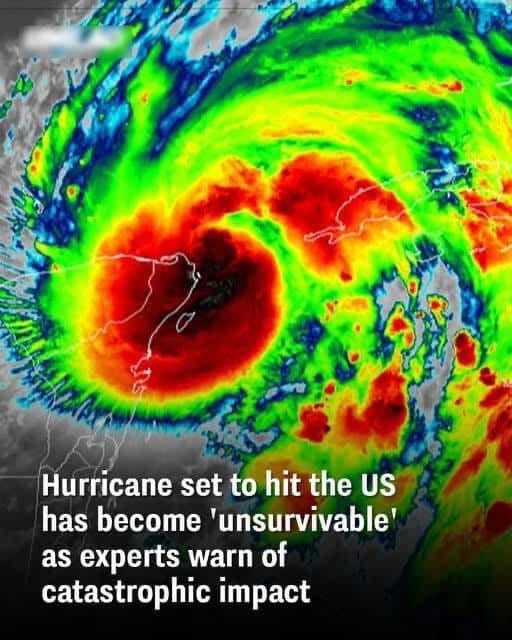Hurricane Rafael, an unusual and powerful November tropical cyclone, has rapidly intensified into a Category 2 hurricane with maximum sustained winds of 110 mph. Meteorologists note that storms of this strength are rare for this time of year, making Rafael a particularly dangerous and unpredictable system.
The National Hurricane Center (NHC) warns that Rafael poses a serious threat from Texas to the Florida Panhandle, with the potential for destructive winds, torrential rain, and life-threatening storm surge. The storm is forecast to make landfall in western Cuba within hours, unleashing damaging winds and heavy rainfall before emerging into the warm waters of the Gulf of Mexico, where further strengthening is possible.
Communities across southeastern United States, including Florida, Alabama, Mississippi, and Louisiana, are now on heightened alert. The Florida Keys have been placed under hurricane warnings, with officials urging residents to prepare for heavy rain, flash flooding, and isolated tornadoes. Travel disruptions, power outages, and coastal flooding are also likely as Rafael pushes northward.
The NHC emphasizes that Rafael’s unusual timing — deep into the Atlantic hurricane season’s final month — underscores the importance of staying prepared even in late fall. Historically, November storms can be deceptive, often catching residents off guard due to lower-than-usual storm activity during this period.
Forecast models indicate that Rafael will continue moving through the Gulf of Mexico after impacting Cuba, potentially strengthening into a major hurricane (Category 3 or higher) before approaching the U.S. Gulf Coast. This scenario could bring devastating impacts to coastal cities, barrier islands, and inland communities, with storm surge heights reaching several feet in vulnerable areas.
Safety officials urge everyone in the potential impact zone to:
- Review evacuation routes and storm safety plans.
- Stock up on emergency supplies, including water, non-perishable food, flashlights, and batteries.
- Stay tuned to official updates from the NHC, local emergency management, and trusted weather outlets.
With the storm’s trajectory and intensity still evolving, residents are advised not to underestimate Rafael’s potential. Even areas far from the center could experience dangerous weather conditions, including tropical storm-force winds and flooding rains.
Hurricane Rafael’s development serves as a stark reminder that hurricane season remains active through November 30, and that preparedness is key to safety. As the storm advances, continued vigilance and early action will be critical in minimizing damage and saving lives.
